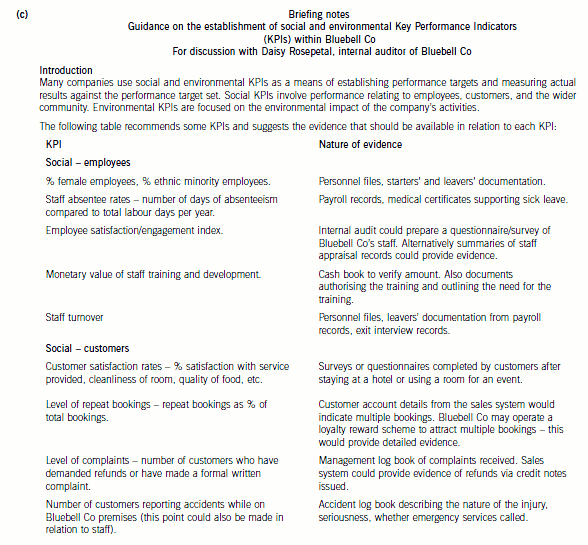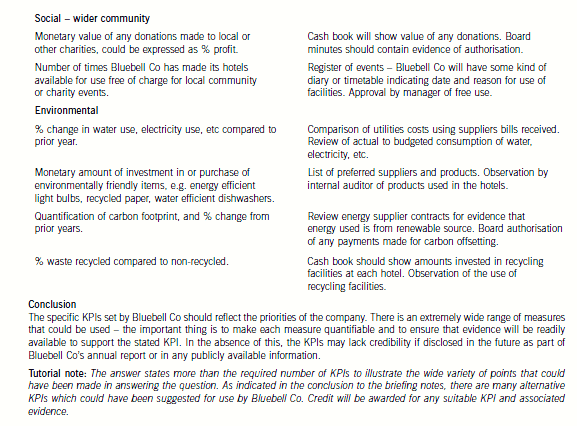2020年ACCA考试报名条件全面深度解析
发布时间:2020-02-28
随着我国对外贸易的发展,近年来ACCA考试热度不断上升,网上也出现了许多关于ACCA考试报名的询问,其中最主要的就是报名条件。鉴于此,51题库考试学习网在下面为大家带来2020年ACCA考试报名条件的相关信息,以供参考。
报考ACCA考试首先需要注册成为学员。ACCA学员注册条件宽松,对报考人员的学历、专业并无严格限制,不同学历的考生可通过各自对应的途径进行注册、报考。报名参加ACCA考试,要具备以下条件之一:
1)凡具有教育部承认的大专以上学历,即可报名成为ACCA的正式学员;(教育部承认的学历除了全日制,还包括成考、自考等,小伙伴们要注意区分)
2)教育部认可的高等院校在校生,顺利完成所有课程考试,即可报名成为ACCA的正式学员;(51题库考试学习网提醒:这里的在校生是本科生,而未完成所有课程考试的在校大学生也可以通过其他途径报考ACCA考试)
对于学历不满足要求的考生,可通过以下途径报考。
3)未符合以上报名资格的申请者,而年龄在21岁以上,可循成年考生(MSER)途径申请入会。(学历符合要求的考生,没有年龄限制)该途径允许学员作为ACCA校外进修生,在两年内通过F2和F3两门课程,便能以正式学员的身份继续考其他科目。(这种途径进入的考生,在通过F2、F3课程之后,仍然要按照正常考试模块顺序参加考试)
4)如果是未符合1、2项报名资格的申请者,也可以先申请参加CAT资格考试。考生在获得CAT资格证书后可豁免ACCAF1-F3三门课程的考试,直接进入技能课程的考试。后续考试需要正常的模块顺序进行,请注意。
注意,注册报名随时都可以进行,但注册时间的早晚,决定了第一次参加考试的时间。一般而言,每年7月31日前注册,有资格参加同年12月份的考试;12月15日前注册,有资格参加翌年6月份考试。另外,小伙伴们如果准备不够好,即使能够报名当年的ACCA考试,也别急于报考哦。
以上就是关于ACCA考试报名条件的相关情况。51题库考试学习网提醒:虽然ACCA考试报名要求低,但是其考试费用较高,各位考生在成为注册会员后要注意安排备考时间。最后,51题库考试学习网预祝准备参加2020年ACCA考试的小伙伴都能顺利通过。
下面小编为大家准备了 ACCA考试 的相关考题,供大家学习参考。
A new internal auditor, Daisy Rosepetal, has recently joined Bluebell Co. She has been asked by management to
establish and to monitor a variety of social and environmental Key Performance Indicators (KPIs). Daisy has no
experience in this area, and has asked you for some advice. It has been agreed with Bluebell Co’s audit committee
that you are to provide guidance to Daisy to help her in this part of her role, and that this does not impair the
objectivity of the audit.
(c) Recommend EIGHT KPIs which could be used to monitor Bluebell Co’s social and environmental
performance, and outline the nature of evidence that should be available to provide assurance on the
accuracy of the KPIs recommended. Your answer should be in the form. of briefing notes to be used at a
meeting with Daisy Rosepetal. (10 marks)
Note: requirement (c) includes 2 professional marks.


(b) Describe five major barriers to good communication. (10 marks)
Part (b):
Barriers to communication include the personal background of the people communicating, including language differences between
staff, management and customers. The use of jargon, especially by professional and technical staff, differences in education levels
can be a substantial barrier throughout the organisation. Communication ‘noise’ is a barrier not always recognised. This is where
the message is confused by extraneous matters not relevant to that particular communication. Different levels of education and
experience can lead to different perception of individuals, leading to conflict within the organisation, between individuals and
between departments. Similarly, another barrier often not recognised is communication overload; too much information being
communicated at one time leading to confusion. Distances involved and the subsequent use of different communication facilities
is a barrier, leading to misunderstandings based on problems noted above. Finally, and perhaps most importantly, distortion of the
information transmitted.
(c) non-consolidated entities under common control. (4 marks)
(c) Non-consolidated entities under common control
■ Horizontal groups of entities under common control were a significant feature of the Enron and Parmalat business
empires.
■ Such business empires increase audit risk as fraud is often disguised through labyrinthine group structures. Hence
auditors need to understand and confirm the economic purpose of entities within business empires (as well as special
purpose entities (SPEs) and non-trading entities).
■ Horizontal groups fall outside the requirement for the preparation of group accounts. It is not only finance that is offbalance
sheet when controlled entities are excluded from consolidated financial statements.
■ In the absence of consolidated financial statements, users of accounts of entities in horizontal groups have to rely on the
disclosure of related party transactions and control relationships for information about transactions and arrangements
with other group entities. Difficulties faced by auditors include:
? failing to detect related party transactions and control relationships;
? not understanding the substance of transactions with entities under common control;
? excessively creative tax planning;
? the implications of transfer pricing (e.g. failure to recognise profits unrealised at the business empire level);
? a lack of access to relevant confidential information held by others;
? relying on representations made in good faith by those whom the auditors believe manage the company when
control rests elsewhere.
■ Audit work is inevitably increased if an auditor is put upon inquiry to investigate dubious transactions and arrangements.
However, the complexity of business empires across multiple jurisdictions with different auditors may deter auditors from
liaising with other auditors (especially where legal or professional confidentiality considerations prevent this).
2 Traditionally, the only objective of a business was to make a profit. However, some writers have suggested that this idea is simplistic and that profitability is only one objective amongst many.
Required:
State and explain Drucker’s eight classifications of objectives.
(15 marks)
2 For the complex, modern business, the view that the single objective of business is to make a profit is regarded by many writers as simplistic. Peter Drucker has argued that for a business to be successful, it must address a number of objectives.
Drucker was one of the first writers to identify the dangers of the single objective of profit maximisation. Concentrating on a single objective (invariably profit) is not only unproductive but potentially harmful to the organisation and can endanger the survival of the business and seriously undermine its future. He argues that business organisations have in fact eight objectives, all of which must be addressed concurrently. These eight objectives are particularly relevant to management, bringing together as they do the need to address all the issues with which the organisation is concerned.
Market standing is the need to identify and maintain market share and to ensure the development of new products to maintain share. Without market standing, no organisation can succeed.
Innovation is the need to develop and find new products and processes; no business can survive on providing the same product or service over the long term. Innovation is fundamental to understanding growth; organisations grow by developing innovative differences to their competitors.
Productivity and ‘contributed value’ recognises the need for efficiency and the efficient use of business resources.
Physical and financial resources is a recognition of the need to use the correct and appropriate financial resources.
Profitability. The word ‘profit’ does not appear, but ‘profitability’. Here there are three important determinants, profitability as a measure of effectiveness (many businesses make a profit which in fact is a poor return on the effort produced), the need for profit so that the business can be self-financing and the need to attract new capital.
Manager performance and development is the explicit recognition that the business requires objectives and that management activity can be linked directly to those objectives.
Worker performance and attitude is recognition that it is vital to measure the performance of the workforce by such means as labour turnover. However, worker attitude is more difficult to measure, but should be attempted.
Public responsibility has become an issue in the twenty-first century. Any business needs to be aware that it is a part of the community within which it operates and is therefore part of a wider social system.
声明:本文内容由互联网用户自发贡献自行上传,本网站不拥有所有权,未作人工编辑处理,也不承担相关法律责任。如果您发现有涉嫌版权的内容,欢迎发送邮件至:contact@51tk.com 进行举报,并提供相关证据,工作人员会在5个工作日内联系你,一经查实,本站将立刻删除涉嫌侵权内容。
- 2020-01-09
- 2020-01-03
- 2020-02-26
- 2020-09-05
- 2020-01-09
- 2019-01-06
- 2020-01-10
- 2019-01-06
- 2020-01-09
- 2020-01-04
- 2020-02-26
- 2020-01-10
- 2020-02-21
- 2020-01-09
- 2020-02-23
- 2020-02-23
- 2020-02-26
- 2020-01-10
- 2020-01-09
- 2020-02-05
- 2020-04-15
- 2021-09-12
- 2019-01-17
- 2019-12-27
- 2020-01-10
- 2020-01-10
- 2020-01-09
- 2020-04-16
- 2020-01-10
- 2020-01-09